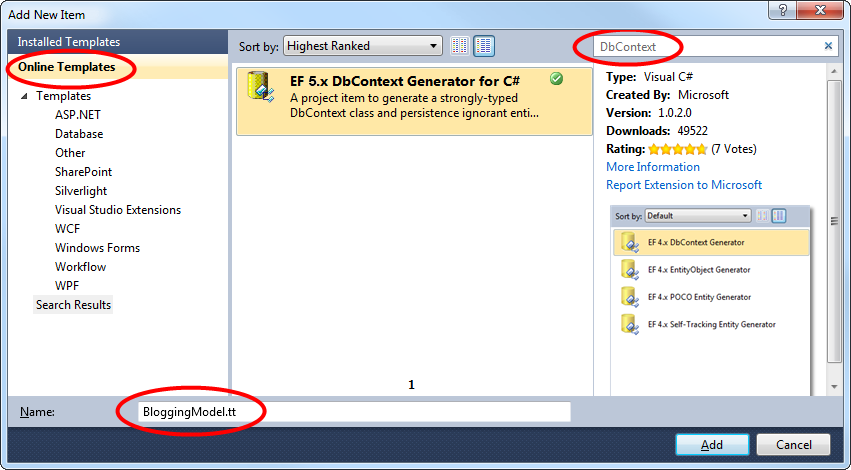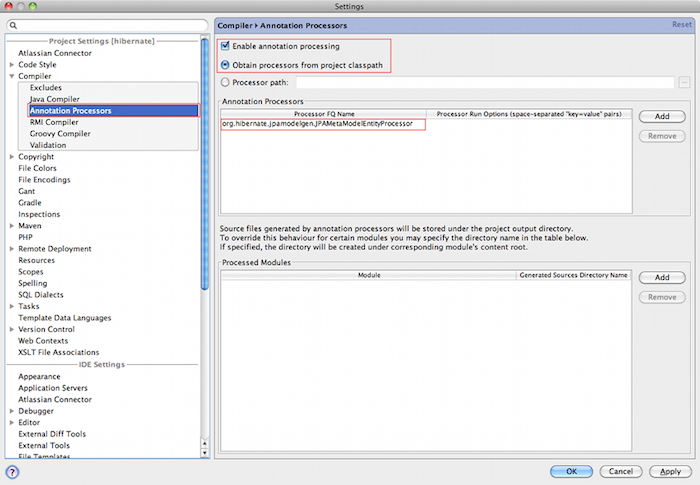
- #Dbcontext generator data annotations how to
- #Dbcontext generator data annotations code
- #Dbcontext generator data annotations plus
- #Dbcontext generator data annotations series
- #Dbcontext generator data annotations download
There are two assemblies for creating and consuming WCF Data Services in the.
#Dbcontext generator data annotations code
NET Framework 4.5 If I Want to Use Code First with WCF Data Services?
#Dbcontext generator data annotations plus
I was surprised to learn that if you’re using the ObjectContext API, a reference to EntityFramework.dll plus a using directive will let you use lambdas with Include here, as well. In fact, the December 2010 Data Points column demonstrates various ways to profile the database when using EF. I always highly recommend profiling the SQL generated by Entity Framework (EF). I can’t talk about using multiple levels of Include without adding a reminder that the more relationships you attempt to eager load with Include, the more complex and degraded your SQL query could become. Here’s the syntax you’d use to select roads along with the trees and their leaves: (r => r.Trees.Select(t => t.Leaves)) However, the lambda relies on additional logic to provide the next level of the relationship.

For example, if your Tree class has an ICollection and you want to eager load the leaves along with the trees, the string representation would look like this: ("Trees.Leaves")

If you want to expand the eager loading on a collection to multiple levels of relationships using the lambdas, you have to incorporate extra Select methods. It turns out that in addition to a reference to EntityFramework.dll, you need a using directive (or Imports for Visual Basic) for in the code file where you’re attempting to use Include with a lambda.
#Dbcontext generator data annotations how to
I had to put my ego aside and ask someone on the team how to get the lambda support. Your attempts to use this feature might have been unsuccessful, however-as were mine.

#Dbcontext generator data annotations series
You’ll find an example in Part 6 of Arthur Vickers’ wonderful 12-part blog series about the DbContext API ( bit.ly/wgI5zW). The ability to use lambda expressions with Include is now built into the DbContext API. Many developers have created their own extension methods to allow them to use a strongly typed expression instead: (r => r.Trees) For example, if you have a class of Road that has a property, Trees, which is an ICollection, you would query for Roads with their Trees like this: ("Trees") With the ObjectContext, the only way to use Include is by passing in a string to represent the navigation property to be eagerly loaded. I’ve also written a blog post on the topic, “Use Projections and a Repository to Fake a Filtered Eager Load,” at bit.ly/uZdnxy. You can read more about this in the June 2011 Data Points column, “Demystifying Entity Framework Strategies: Loading Related Data,” at /magazine/hh205756. If you want to combine eager loading with filtering, consider using projections. This is how Include has worked since the first release of Entity Framework in the. That single case: When you explicitly load through the change tracker API, you can apply a Query method followed by a Where filter: context.Entry(personInstance)īut to be clear, you can’t do this for eager loading with Include. This is also true for lazy loading and, in all but one case, for explicit loading. Unfortunately, you can retrieve only complete sets of related data with eager loading. The Include method allows you to eagerly load related data when executing queries against an Entity Data Model. Can You Filter Related Data with Include? NET APIs in their October 2011 blog post, “How We Talk About EF and Its Future Versions” ( bit.ly/owoWgn). You can read more about the team’s plans for releasing features of Entity Framework and why they decided to focus on using NuGet for deploying certain types of features outside of the.
#Dbcontext generator data annotations download
Figure 1 shows the EntityFramework package (currently the most popular download in the NuGet package library) in the Visual Studio Library Package Manager.įigure 1 Installing Code First and DbContext into a Project via EntityFramework.dll

Installing the NuGet extension in Visual Studio gives you the Library Package Manager, which lets you add a reference to EntityFramework.dll to your project. Code First and the DbContext API are part of the EntityFramework.dll assembly, which you can add to your projects dynamically using NuGet. NET Framework release cycle, allowing the Entity Framework team to release updates when they’re ready without waiting for the next official release of the. Code First and DbContext will be distributed separately from the Microsoft. Will Code First and DbContext Be Added to the. To maximize space, I’ll point to additional resources where you can find detailed information to supplement the material I provide. This month, I’d like to share the answers to questions I’m frequently asked about Code First and DbContext in Entity Framework 4.2. Volume 27 Number 03 Data Points - Entity Framework Code First and DbContext FAQs


 0 kommentar(er)
0 kommentar(er)
